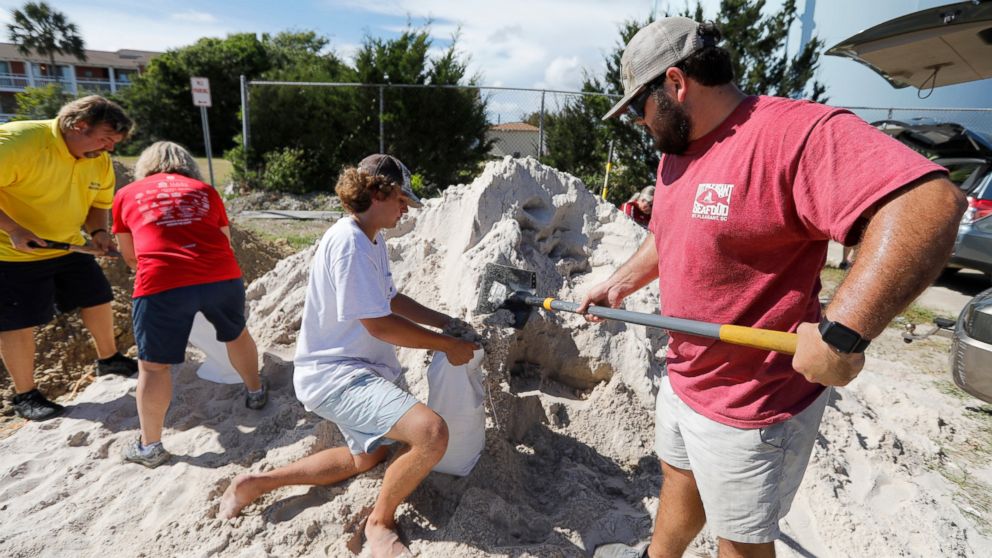
Hurricane Florence, a Category 4 storm that continues to strengthen, is bearing down on the North and South Carolina coasts, forcing residents and visitors to evacuate.
Florence is currently packing maximum sustained winds of 130 mph.
The storm is forecast to make landfall early morning Friday between midnight and 5 a.m. as a major hurricane.
“We here in North Carolina are bracing for a hard hit,” North Carolina Gov. Ray Cooper said Monday.
“This hurricane is big and strong and it’s bigger than Hurricane Hugo, which we had back in 1989,” South Carolina Gov. Henry McMaster told “Good Morning America” Tuesday. “It’s a lot harder to stand up and get ready than it is to stand down, so we’re up and ready for whatever comes our way.”
A major danger is flooding. The storm is expected to slow as it moves on to land and could dump as much as 30 inches of rain.
“All the predictions are when it gets to the coast it’ll be moving slow so it’ll be dumping rain on us and North Carolina for a long time,” McMaster said.
The rain is also forecast to be heavy in Virginia and could move inland, impacting West Virginia and Tennessee.
Storm surge is also a major threat, potentially reaching 12 feet in some areas.
States of emergency have been declared in South Carolina, North Carolina, Virginia and Maryland, and Washington, D.C.
Residents and visitors on South Carolina’s coast are ordered to evacuate Tuesday.
Boeing is suspending its operations at Boeing South Carolina because of the storm threat.
Some coastal areas of North Carolina and Virginia are also under mandatory evacuation orders.
Schools are also packing up, just days into the new year.
North Carolina State, University of North Carolina and UNC-Wilmington have all suspended classes, with UNC-Wilmington evacuating its coastline campus by noon Tuesday. In South Carolina, schools including The Citadel, Coastal Carolina University and College of Charleston have all closed until further notice.





